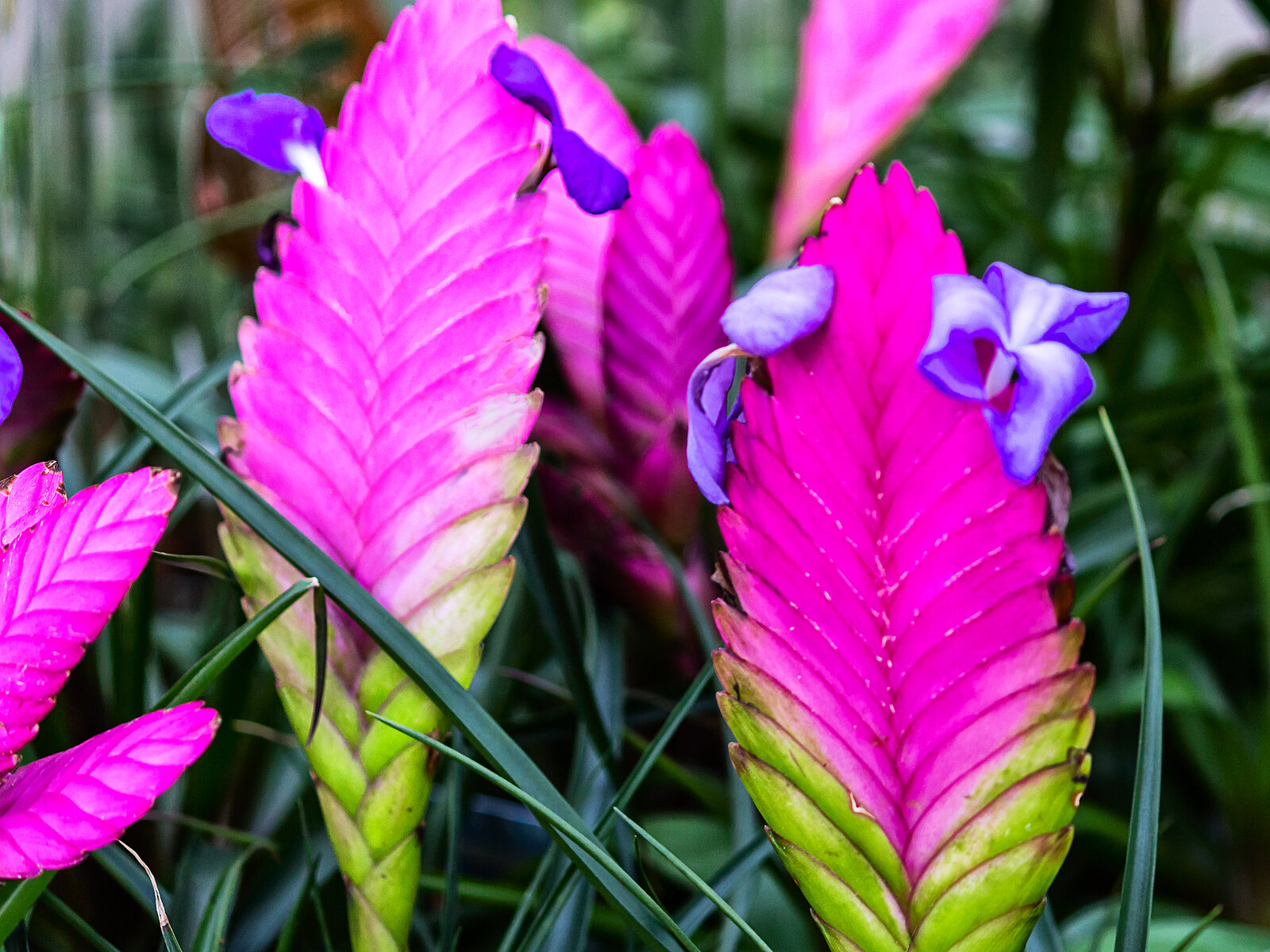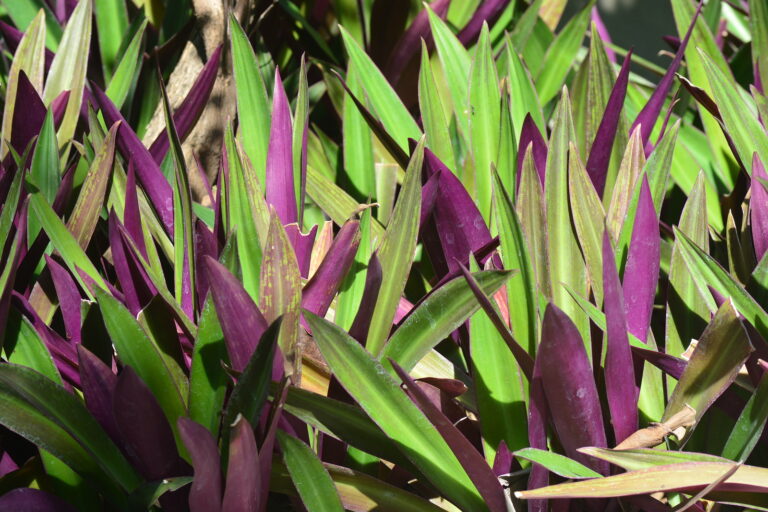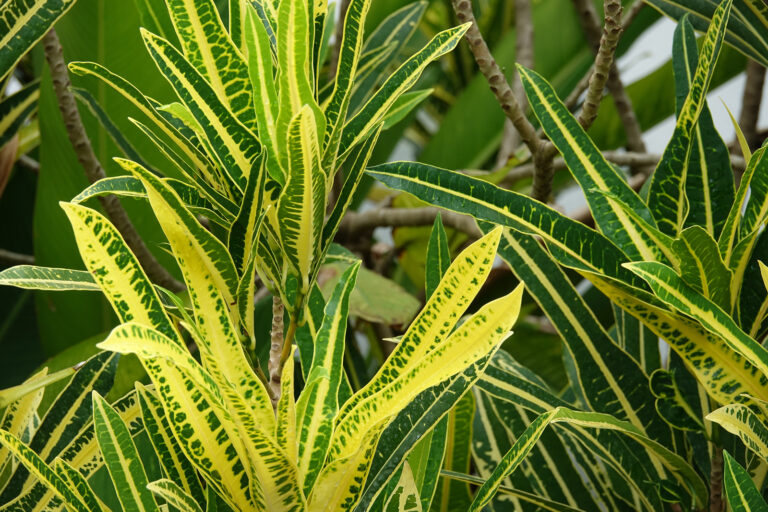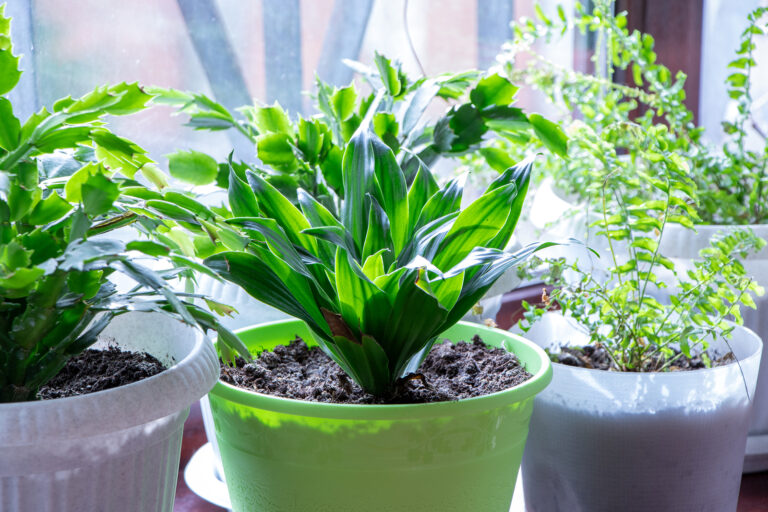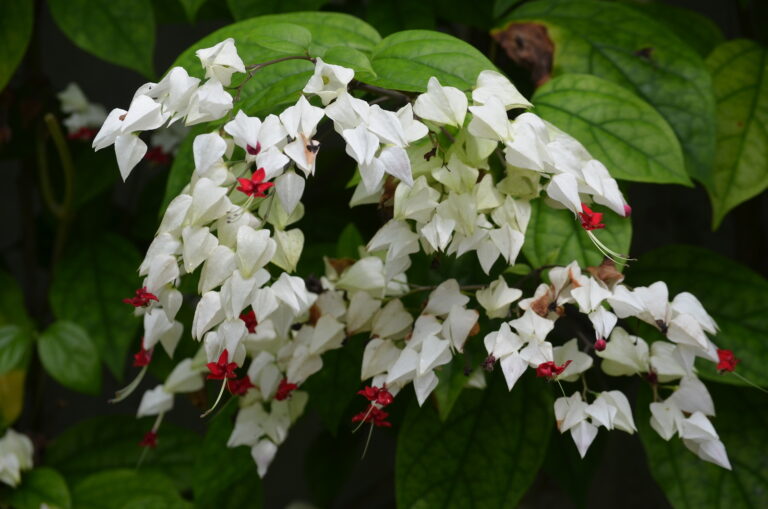How to Grow Tillandsia
Tillandsia, commonly known as air plants, is a diverse genus of over 650 species in the bromeliad family, native to forests, deserts, and mountains of Central and South America. These plants are epiphytes, meaning they absorb moisture and nutrients from the air through their leaves, not through their roots, which are primarily used for anchoring themselves to surfaces like trees or rocks. Because of their unique appearance and minimal soil needs, Tillandsia has become highly popular for use in both gardens and as houseplants.
Tillandsia is a genus of tree-dwelling (epiphytic) and terrestrial or rock-dwelling evergreen perennial bromeliads. They are mainly borne in rosettes. Most species have tubular to funnel-shaped flowers among colorful floral bracts.
Tillandsia are commonly grown in pots or as epiphytes on tree branches or slabs of bark. In some, leaf rosettes are bright green; in others, they are gray and scaly or scurfy. They are often mounted on plaques of wood or bark.
Tillandsia is a genus of more than 400 species. The best known is Spanish moss, T. usneoides. Tillandsia is native the southern United States, West Indies, and tropical Central and South America.
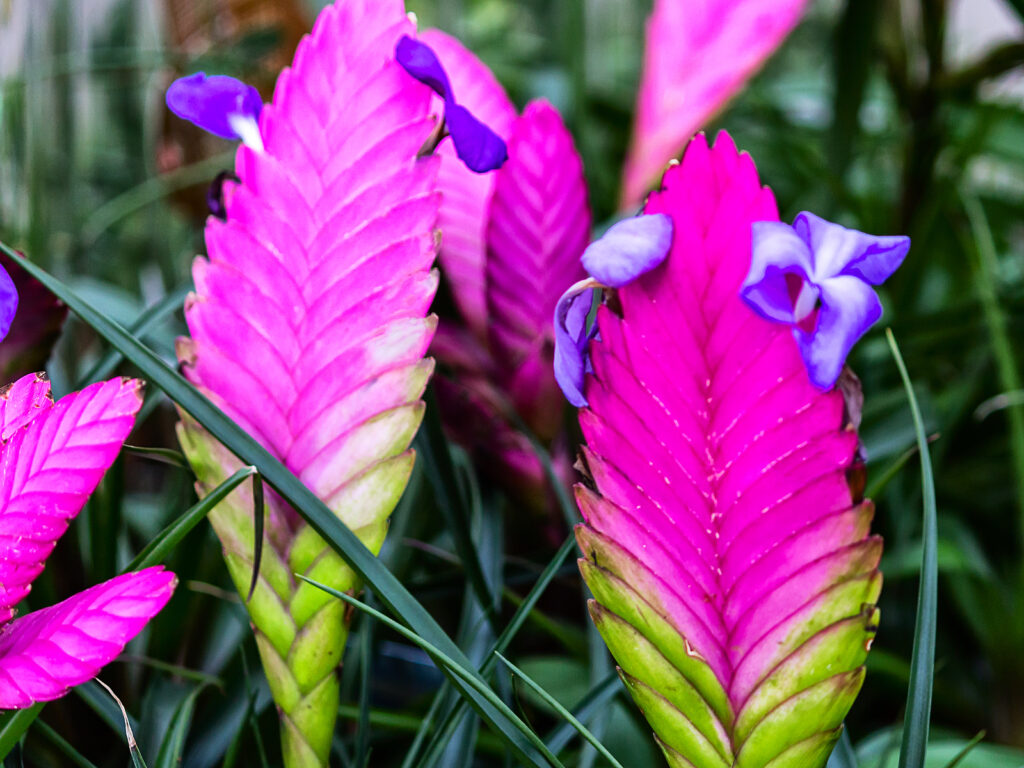
Tillandsia description
- Foliage: Tillandsia plants have long, slender leaves that can be straight, twisted, or curled depending on the species. The leaves are covered with tiny scales called trichomes, which help the plant absorb water and nutrients from the air.
- Flowers: Many Tillandsia species produce colorful flowers, which are often small but vibrantly colored in shades of pink, purple, yellow, or red. The flowers emerge from the center of the plant on a spike, adding a splash of color to their silvery or green foliage.
- Growth Habit: Tillandsia plants grow without the need for soil. They can be small and compact, making them perfect for decorative displays. Some species are larger and form more elaborate rosettes of leaves.
Tillandsia uses in the garden
- Epiphyte Garden Displays: In tropical and subtropical climates (USDA Zones 9-11), Tillandsia can be attached to trees, rocks, or other structures in the garden. They make excellent additions to epiphyte or orchid gardens, where they can grow on branches, driftwood, or other surfaces.
- Vertical Gardens: Tillandsia can be used to create vertical garden displays, where they can be mounted on walls, trellises, or other structures. Their ability to grow without soil makes them ideal for filling vertical spaces and creating green walls.
- Terrariums and Outdoor Containers: While Tillandsia doesn’t need soil, it can still be displayed in open terrariums, on driftwood, or in hanging containers outdoors. Grouping several air plants together can create visually stunning arrangements.
Tillandsia uses as a houseplant
- Decorative Displays: Indoors, Tillandsia is often used for decorative displays because of its versatility and low-maintenance requirements. They can be placed in glass terrariums, mounted on decorative pieces of wood, rocks, or even hung from the ceiling in creative arrangements. Air plants work well on shelves, in hanging displays, or nestled into small decorative containers.
- Wall Art: Because they don’t require pots, Tillandsia can be used as living wall art. By attaching them to frames, boards, or wire structures, air plants can be incorporated into creative, green home decor.
- Terrariums: Tillandsia thrives in open terrariums, where they can be paired with other small plants, decorative stones, or moss to create miniature indoor landscapes. The open environment ensures proper air circulation, which is important for their health.
- Low-Maintenance Plants: Tillandsia is extremely easy to care for indoors, as it only requires light misting or soaking in water a couple of times a week. Since they absorb moisture and nutrients from the air, they don’t need soil, and their minimal water requirements make them suitable for beginners or those looking for low-effort plants.
Tillandsia care tips
- Light: Tillandsia prefers bright, indirect light. They can tolerate a bit of direct sunlight, but too much intense sun can cause the leaves to dry out. When grown indoors, they do well near bright windows with filtered light.
- Watering: Air plants absorb water through their leaves. They should be misted with water a few times a week or soaked in water for about 20-30 minutes every one to two weeks, depending on humidity levels. After soaking, shake off any excess water and ensure they dry completely to avoid rot.
- Air Circulation: Good air circulation is essential for Tillandsia, as they rely on it for moisture absorption. Whether indoors or outdoors, ensure they’re placed in areas where air can flow freely around them.
- Temperature and Humidity: Tillandsia thrives in warm, humid environments, typically between 50-90°F (10-32°C). They appreciate high humidity but can adapt to lower humidity conditions as long as they are misted more frequently.
- Fertilization: While not always necessary, Tillandsia can benefit from occasional fertilization. A diluted, water-soluble fertilizer designed for bromeliads or orchids can be applied once a month during the growing season to promote blooming.
Tillandsia styling ideas
- Hanging Displays: Tillandsia is perfect for creating hanging displays using string, fishing wire, or decorative macramé hangers. They can be hung individually or grouped together at varying heights for a floating garden effect.
- Mounted Art: Attach Tillandsia to driftwood, cork bark, or other natural materials using wire or glue. This creates a natural, artistic display that can be hung on walls or placed on tables.
- Open Glass Terrariums: Place air plants in open glass terrariums with decorative stones, seashells, or moss. The transparency of the glass showcases their unique shapes while allowing for airflow.
- Desk or Shelf Plants: Because they’re small and low maintenance, Tillandsia can be placed on desks, bookshelves, or countertops in minimalistic arrangements. Simply place them in small decorative dishes or on natural materials like rocks or wood.
Tillandsia outdoor/indoor adaptability
Tillandsia’s versatility means they can easily transition between outdoor and indoor environments. In warmer climates, they can be kept outdoors year-round, while in cooler climates, they can be moved indoors during colder months. Indoors, they add a unique, natural touch to home decor, while outdoors, they can be used in creative vertical gardens or mounted displays.
Get to know Tillandsia
- Plant type: Perennial bromeliad
- Growing zones and range: Zones 13-15
- Hardiness: Hardy to 45°F (7°C)
- Temperature: Tolerates 50° to 90°F (10° to 32°C) range, year-round.
- Height and width: 7 to 12 inches (18-30cm) tall, 6 to 12 inches (15-30cm) wide depending on the variety,
- Foliage: Often scaly leaves are star-shaped to narrowly triangular to linear, sometimes tapering to fine threads; borne in rosetts with long slender stems.
- Flowers: Tubular to funnel-shaped flwoers each with 3 sepals and 3 petals, often with spreading terminal lobes; borne usualy amoung colorful bracts
- Bloom time: Opening in daytime in spring or autumn
- Uses: on a bromeliad tree.
- Common name: Air plant, blue torch, Spanish moss
- Botanical name: Tillandsia
- Family name: Bromeliaceae
- Origin: Southern United States, West Indies, Central and South America
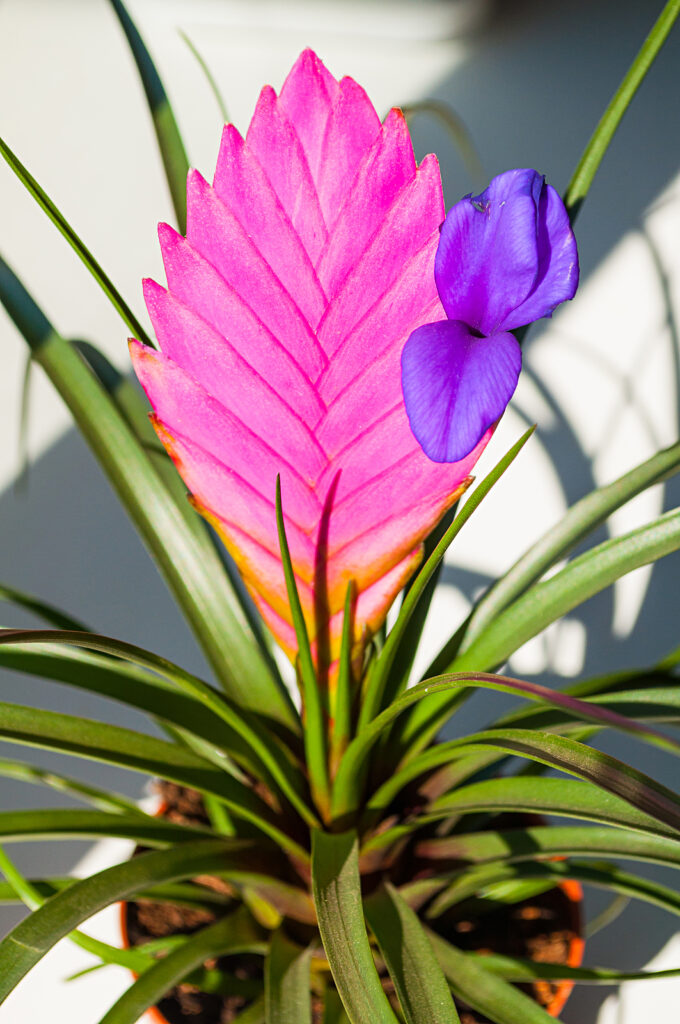
Where to plant Tillandsia
- Light: Bright light, direct sun from southern exposure. Air circulation is important.
- Light: Bright green varieties need filtered light; gray varieties can tolerate more sun.
- Soil: Mount on cork or slab of tree fern. Pot larger species in epiphytic bromeliad mix.
- Where temperatures fall below 45°F (7°C) grow as a houseplant or in a warm greenhouse.
- In subtropical and tropical regions grow outdoors on a tree or in a rock garden depending on speices; or grow on branches or bark placed on the ground.
When to plant Tillandsia
- Set Tillandsia outdoors in any region where temperatures do not fall below 45°F (7°C); otherwise, grow Tillandsia indoors.
Planting and spacing Tillandsia
- Space Tillandsia 6 to 12 inches (15-30cm) apart depending on the variety.
- Tillandsia prefers to be mounted on cork or a slab of tree fern bark, rather than being potted.
- If potted, plant Tillandsia in a bromelaid potting mix with the bases of the leaves at or just above the surface.
How to water and feed Tillandsia
- Water: Potted plants require only light watering. Mist plants that are not potted frequently. Humidity, 50% to 60%. Constant air circulation is essential.
- Let the potting mix dry between waterings.
- Bright green types need regular water; gray types need less water.
- Feeding: Monthly, with mild, half strength low-nitrogen liquid fertilizer. Avoid oil-based products such as fish emulsion.
Tillandsia care
- Tillandsia growth slows in winter; water sparingly.
- Tillandsia can be mounted on plaques of wood or bark and used as wall ornaments indoors or outdors (where hardy).
Growing Tillandsia as a houseplant
- Two species, Tillandsia caput-medusae, Medusa;’s head, and T. usneoides, Spanish moss, are grown as houseplants.
- Medusa’s head and Spanish moss need bright light, warm room temperature, and high humidity.
- Medusa’s head can be anchored to a slab of bark or grown in a pot. In a pot, use a peat-based soilless mix.
- Spanish moss can be anchored to tree bark or dropped over any structure to hang freely.
- The planting medium should be kept moist; to water mounted plants, submerge the bark slab in a sink or pail of water or mist twice a week.
- Medusa’s head can be fertilized once a month throughout the year.
Tillandsia pests and diseases
- Tillandsia is prone to Fusarium rot, scale insets, and mealybugs.
- Tillandsia is suscpetible to crown rot.
Tillandsia propagation
- Sow seed at 81°F (27°C) in spring onto sphagnum moss; mist daily.
- Detach offsets in spring.

Tillandsia varieties to grow
- Tillandsia bulbosa, dancing bulb. Grows to 9 inches (23cm) from a bulbous base; contorted branches extend outward and may have red or purple margins; blooms consist of red or green bracts with blue-purple flowers, appearing in fall.
- T. caput-medusae, Medusa’s head. Epiphyte grow 6 to 16 inches; dark green leaves; tubular blue flowers with red bracts.
- T. cyanea. Epiphytic perennials; stemless rosette of arching, dark green leaves with sharp edges; 8-inch (20cm) spike bears blue flowers and pink bracts; measures from 10 to 30 inches (25 to 76 cm) tall.
- T. ionantha, sky plant. Clustering epiphytic dwarf with pointed, silvery leaves arranged in a rosette; rosette center turns pink or red as violet flowers develop.
- T. lindenii, also listed as T. lindeniana, blue-flowered torch. Epiphytic perennial grows to 24 inch (61cm) tall; arching rosette of green leaves; deep blue flowers emerge from pink bracts in summer.
- T. setacea bears many thin, filamentlike leaves.
- T. usneoides, Spanish moss. Pendent, epiphytic perennial; rootless plant, with several feet of slender, silvery stems resembling lichen; in summer, pale green or blue flowers may appear.

